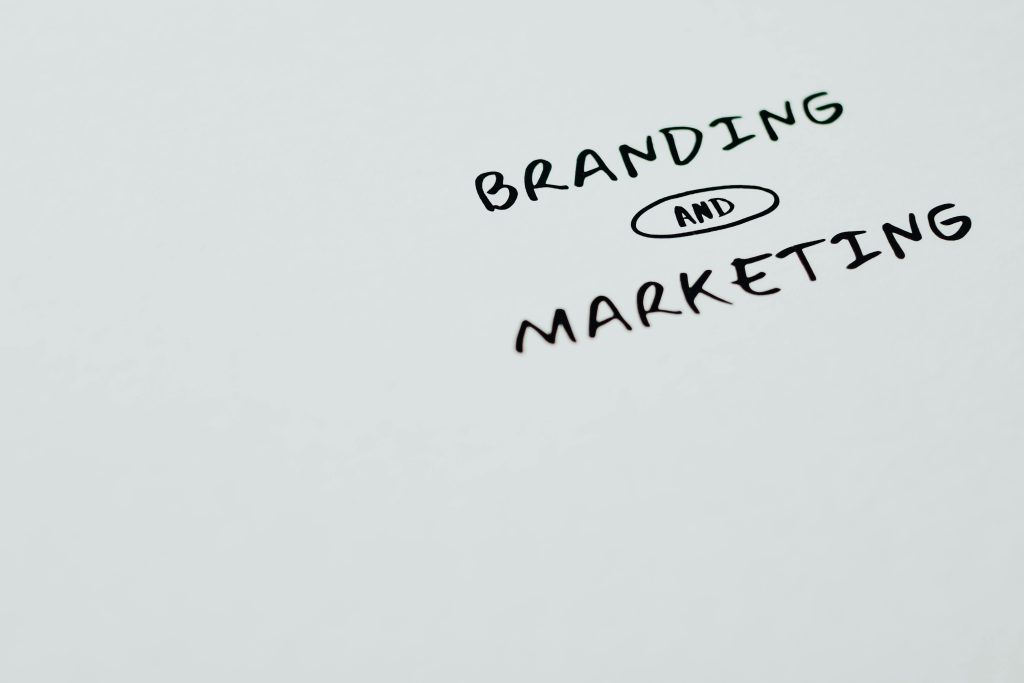Introduction
You’ve invested in a professionally designed logo—now what? If your designer sent you a folder filled with files like .AI, .EPS, .SVG, .PNG, and .JPG, you might be wondering: which format do you actually use, and when?

Logos are used across a wide range of mediums—from high-resolution print to responsive websites and social media platforms. Each use case demands specific file types to maintain clarity, scale appropriately, and retain color fidelity. In this guide, we’ll break down which logo file formats you need for print, web, and social media, what each format is for, and how to keep your brand looking consistent and professional everywhere it appears.
Understanding Logo File Types: Vector vs Raster
Before choosing which file to use, it’s essential to understand the difference between vector and raster file types. This distinction influences print quality, scalability, and where the file should be applied.
Vector Files
- Comprised of paths, curves, and points based on mathematical equations.
- Scalable to any size without loss of quality.
- Ideal for print and high-resolution uses.
- Usually created in professional design software like Adobe Illustrator.
Common vector formats:
.AI(Adobe Illustrator).EPS(Encapsulated PostScript).SVG(Scalable Vector Graphics).PDF(Portable Document Format with embedded vectors)
Raster Files
- Comprised of pixels, making them resolution-dependent.
- Scaling up can lead to blurriness or pixelation.
- Best suited for digital and screen-based applications.
Common raster formats:
.PNG(Portable Network Graphics).JPGor.JPEG(Joint Photographic Experts Group).GIF(limited use, often for animation)
Recommended Logo Formats by Use Case
1. For Print Materials
Print materials such as business cards, brochures, packaging, and large-scale signage demand precision, scalability, and color accuracy.

Recommended file formats:
.AI.EPS.PDF(with vector data preserved)
Key Considerations:
- Always use CMYK color mode for print (Cyan, Magenta, Yellow, Black).
- Outline fonts in files like
.AIand.EPSto ensure there are no font mismatches when sent to printers. - Use a version of the logo with a transparent background if it’s being placed over a non-white surface.
2. For Websites and Digital Interfaces
Web design requires lightweight, high-quality graphics that load quickly and display cleanly on screens of various sizes and resolutions.
Recommended file formats:
.SVG– Preferred due to its scalability and small file size..PNG– Excellent for graphics requiring a transparent background..JPG– Suitable for logos with photographic elements or when file size needs to be minimized.
Key Considerations:
- Use
.SVGfor responsive logos that scale with screen size, especially in headers and navigation bars. - Use
.PNGfor logos that sit on top of backgrounds or need sharp edges with no background color. - Compress
.JPGfiles when speed is a priority and transparency is not required.
3. For Social Media Platforms
Social media platforms have strict guidelines for image dimensions and file types. Logos used here should be crisp, well-aligned, and properly sized.
Recommended file formats:
.PNG– Ideal for crisp edges and transparent backgrounds..JPG– Acceptable when transparency is not needed and size must be minimal.
Platform-Specific Guidelines:
| Platform | Profile Image Size | Recommended Format |
|---|---|---|
| 170 × 170 px | .PNG or .JPG | |
| 320 × 320 px | .PNG | |
| 300 × 300 px | .PNG | |
| 400 × 400 px | .PNG | |
| YouTube | 800 × 800 px | .PNG |
Best Practices:
- Center the logo and allow sufficient padding to avoid cropping.
- Ensure the file is optimized for clarity on high-resolution (Retina) screens.
- Use a simplified or icon-only version of the logo for small-format placements.
4. For Email Signatures and Digital Documents
In email signatures or downloadable PDFs, clarity and load time are crucial. Logos must appear crisp without slowing down email performance.

Recommended file formats:
.PNG– Best for small, transparent logo usage..JPG– Use if transparency is not required and minimal file size is important.
Tips:
- Keep logo file sizes below 100 KB for email usage.
- Use logos between 100–300 pixels wide for most email templates.
- Avoid animated file formats or embedded links that may trigger email client restrictions.
5. For Promotional Items and Merchandise
Items such as t-shirts, mugs, tote bags, or embroidered apparel require a logo file that can scale cleanly and be color-separated for production.
Recommended file formats:
.EPS.AI
Production Requirements:
- Convert all fonts to outlines to avoid font rendering issues.
- Simplify color schemes—avoid gradients or overly complex effects.
- Provide PMS (Pantone Matching System) color codes when possible.
Quick Access: Logo Format Decision Table
| Use Case | Best Formats | Notes |
|---|---|---|
.AI, .EPS, .PDF | Use CMYK and vector formats only | |
| Web & Digital | .SVG, .PNG, .JPG | Use RGB and compress for faster loading |
| Social Media | .PNG, .JPG | Use platform-specific dimensions |
| Email Signatures | .PNG, .JPG | Keep size under 100 KB |
| Promotional Items | .EPS, .AI | Ensure fonts are outlined and colors are exact |
Final Tips for Managing Your Logo Files

- Request a Complete Logo Package
Ask your designer for all major formats in different variations: full-color, black, white, transparent, and icon-only. - Organize Files Logically
Use folders like/Print,/Web,/Social, and/Assetsto keep everything easily accessible. - Avoid Re-saving or Converting Files Improperly
Never convert a raster file to vector by changing the extension. If a file wasn’t created as a vector, it won’t scale properly when renamed. - Document Usage Guidelines
Maintain a brand guide or spec sheet that details which files should be used in each scenario. This ensures consistency across all marketing and communication channels.
Conclusion
Your logo is the visual cornerstone of your brand. To preserve its integrity, you need to use the correct file formats across print, digital, and social platforms. Understanding the difference between vector and raster files—and knowing when to use .AI, .PNG, .SVG, or .JPG—will prevent blurry images, off-brand colors, and unprofessional presentations.
By preparing and organizing your logo assets thoughtfully, you ensure your branding looks as sharp on a billboard as it does on an Instagram icon.
